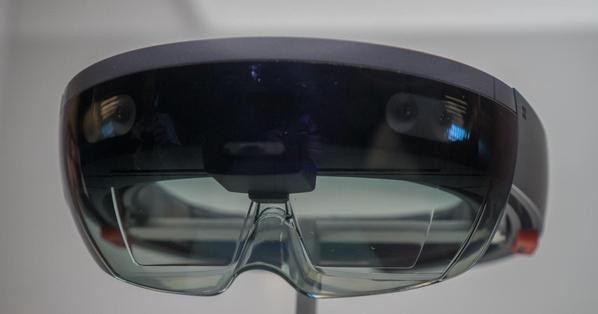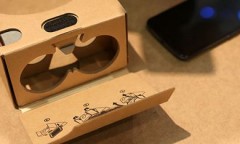By Steve Pak, | January 17, 2016

HoloLens AR/VR Headset
Microsoft has released new details about its HoloLens Augmented Reality (AR) and Virtual Reality (VR) headset, including information about its release, price, battery life, and field of view. This follows the operating system giant's launching a developer demo at the company's flagship store in the Manhattan district of New York City.
Like Us on Facebook
Bruce Harris is a Microsoft Technical Evangelist. He has revealed some brand new details about the AR headset including issues related to its battery life and field of view issues.
Harris made a video from a Tel Aviv event. He claims the HoloLens headset's battery life will be 5.5 hours during regular, use, but 2.5 hours when pushed to the device's limits.
The mixed reality headset supports Bluetooth and Wi-Fi wireless connectivity. Microsoft shared that it has no plans to roll out a wired version of its AR/VR headset, according to IGN. Windows 10 universal apps run on the AR/VR device.
Harris also tackled some field of view issues. He explained the experience of using the HoloLens headset to viewing a 15-inch monitor about two feet (0.6 meters) from the user's face, although the size will be boosted when it would be a cost-effective step for the Bill Gates co-founded company to take.
Future production runs of the Microsoft HoloLens will improve the cost and battery life. That could result in future versions of the AR/VR device having a wider field of view.
However, Microsoft has revealed that between the developer kits and retail models, the field of view will not improve much. It has been a major issue among people who tried out the device at the E3 and Build events last year.
Harris also revealed that HoloLens devices will include the ability to link multiple AR headset. The device's Internet connectivity will allow two or more users to view the same objects in real-time, according to The Verge.
Microsoft's plan is to release HoloLens dev kits for $3,000 later this year. That compares with the much cheaper Oculus Rift ($600), Samsung Gear VR ($99) and Google Cardboard ($20) headsets.
Microsoft opened its HoloLens developer demo rooms at its flagship Microsoft Store last December. It included its Project X-Ray video game with glowing robotic scorpions and drones.
Here's a Project X-Ray demo:
-
Use of Coronavirus Pandemic Drones Raises Privacy Concerns: Drones Spread Fear, Local Officials Say

-
Coronavirus Hampers The Delivery Of Lockheed Martin F-35 Stealth Fighters For 2020

-
Instagram Speeds Up Plans to Add Account Memorialization Feature Due to COVID-19 Deaths

-
NASA: Perseverance Plans to Bring 'Mars Rock' to Earth in 2031

-
600 Dead And 3,000 In The Hospital as Iranians Believed Drinking High-Concentrations of Alcohol Can Cure The Coronavirus

-
600 Dead And 3,000 In The Hospital as Iranians Believed Drinking High-Concentrations of Alcohol Can Cure The Coronavirus

-
COVID-19: Doctors, Nurses Use Virtual Reality to Learn New Skills in Treating Coronavirus Patients











